Early in my career at the Stark Center, we developed an exhibit about the 1914 football team, an undefeated, national-championship-winning squad, which was an easy choice of subject given the 100-year anniversary in 2014, the team’s remarkable dominance (they outscored their opponents 358 to 21), and the way the roster had become a veritable “who’s who” in Texas history. Some notable figures include: legendary track coach and founder of the Texas Relays Clyde Littlefield; Louis Jordan, the first Texas officer killed in WWI combat, whose sacrifice was honored in the first dedicated name of this stadium––Texas War Memorial Football Stadium––and, more specifically, with a flagpole purchased by his hometown of Fredricksburg that was dedicated in his name (it now stands in a plaza off the Northwest corner of the stadium); K. L. Berry, who had a military career that included postings along the Mexican border, surviving the Bataan Death March in WWII and a promotion to brigadier general, then Adjutant General of the Texas Military Department; and Len Barrell, who scored 14 touchdowns, kicked one field goal and 34 extra points making him the Longhorn who scored the most points in a single football season for 83 years (until Ricky Williams broke Barrell’s record in the 1997 season). There were fifteen men who earned varsity letters as members of the football team that year. Nearly half of them (7) have been selected for the Longhorn Hall of Honor. Even more, if you include head coach David Allerdice, trainer and future baseball coach Billy Disch, and “Doc” Henry Reeves, the much-beloved African-American athletic trainer who provided medical care to the football players between 1895 and 1915. Those interested for more details should check out Terry Todd’s blog: “Remembering Clyde Littlefield and the 1914 Perfect Season.”
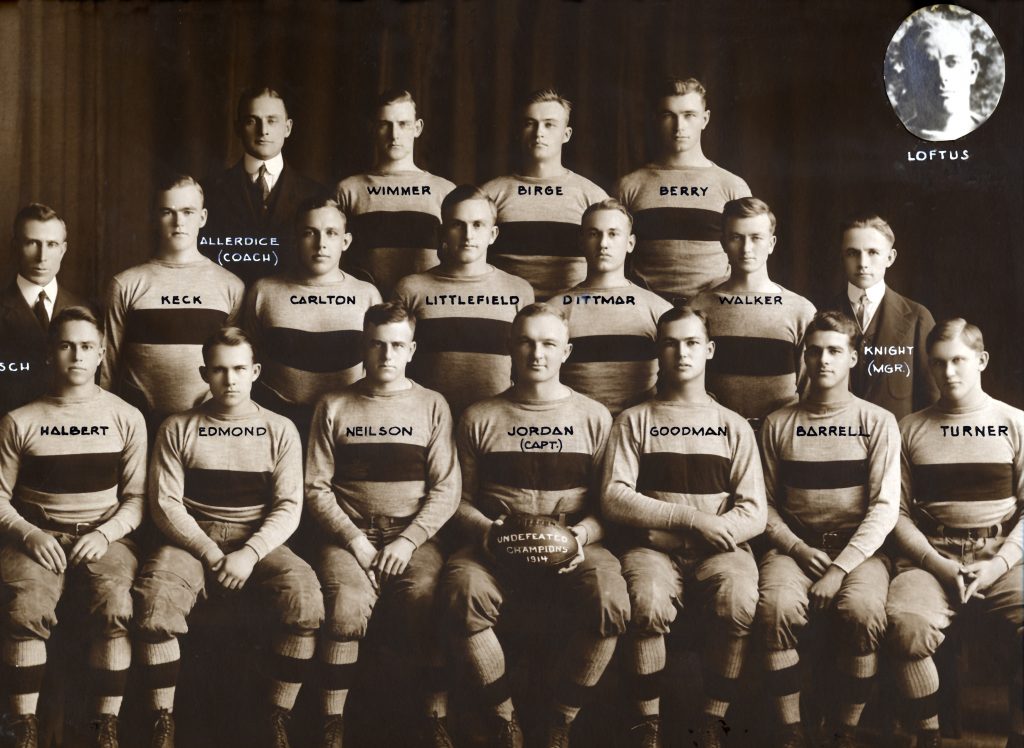
During his senior year in 1910, our patron saint Lutcher Stark served as the manager of the University of Texas football team and cultivated a love of sports, especially Longhorn sports. After graduating, Stark remained tied to the Forty Acres by becoming its greatest benefactor and serving a record 24 years as a member of its board of regents. In the early days of his philanthropy, Stark purchased blankets during the 1914 season for each member of the Longhorn football team, so they could keep warm on the sidelines. The blankets featured the words “Texas Longhorns” and the image of a longhorn steer. Much more detailed than the current logo, the longhorn sewn onto these blankets showed the head and face down through the neck and shoulders. University of Texas teams had been referred to as the “Steers” and “Longhorns,” but, at that time, they were more commonly referred to, simply, as “varsity.” We credit these blankets gifted by Stark in 1914 as foundational brand building that permanently marked the University of Texas identity.
Soon after opening the 1914 football exhibit, we began a new project constructing a large, custom display case on the wall across from our reception desk, where we now showcase one of the original 1914 blankets purchased by Lutcher Stark. This one belonged to Theo Bellmont, who was hired as the University’s first Athletic Director in 1913. It was donated by Bellmont’s grandson and friend of the Stark Center, Jack Gray. The display case we built to tell the story of the 1914 blankets is the largest in our galleries and it includes a letter jacket presented to Stark in recognition of his service, correspondence (on loan from Walter Riedel) from the 1910 season in which Stark, acting as team manager, organized match ups and travel, plus a selection of photographs. Before we had finished installing all the elements in the case, we were contacted by Dr. Corwin D. Martin, a private collector in Arizona, who knew nothing of our plans for the new display, but had acquired and wanted to donate Len Barrell’s leather cleats, which had run for and kicked all those points during the 1914 season. We graciously accepted and quickly altered the exhibit design to include them. The most remarkable detail about Barrell’s cleats is that visitors can clearly see each cleat was individually tacked into the sole of the shoe.
And now, friends, the history of that 1914 football team and the Stark Center’s connection to it continues to develop. Last fall I was contacted by my new friend John H. Keck, who informed me that he was the grandson of Ray Keck, a member of that great, undefeated team. Mr. Keck was in possession of his grandfather’s letter sweater and curious if he could loan it to us for display. I said, “Of course!” So, John and his wife Ceci came to Austin last month and delivered grandfather Ray’s letter sweater—but not before John decided to try the sweater on himself and snap a photo. I gave them a tour of the Stark Center and we spent the afternoon visiting in the conference room. During our conversation, John pulled up photos of a sterling silver medal that Stark had also purchased for the members of the 1914 football team at the conclusion of their season. I was totally unfamiliar with them and John, who’s done a remarkable job preserving his grandfather’s collection, had wonderful photographs of his grandfather’s fully intact medal: a longhorn head with carnelian gemstone eyes with the words “Texas Longhorns” on the front; a banner attached above proclaims “Football Undefeated” with the year 1914; and on the back is the recipient’s name, in this case, “Ray Keck.”
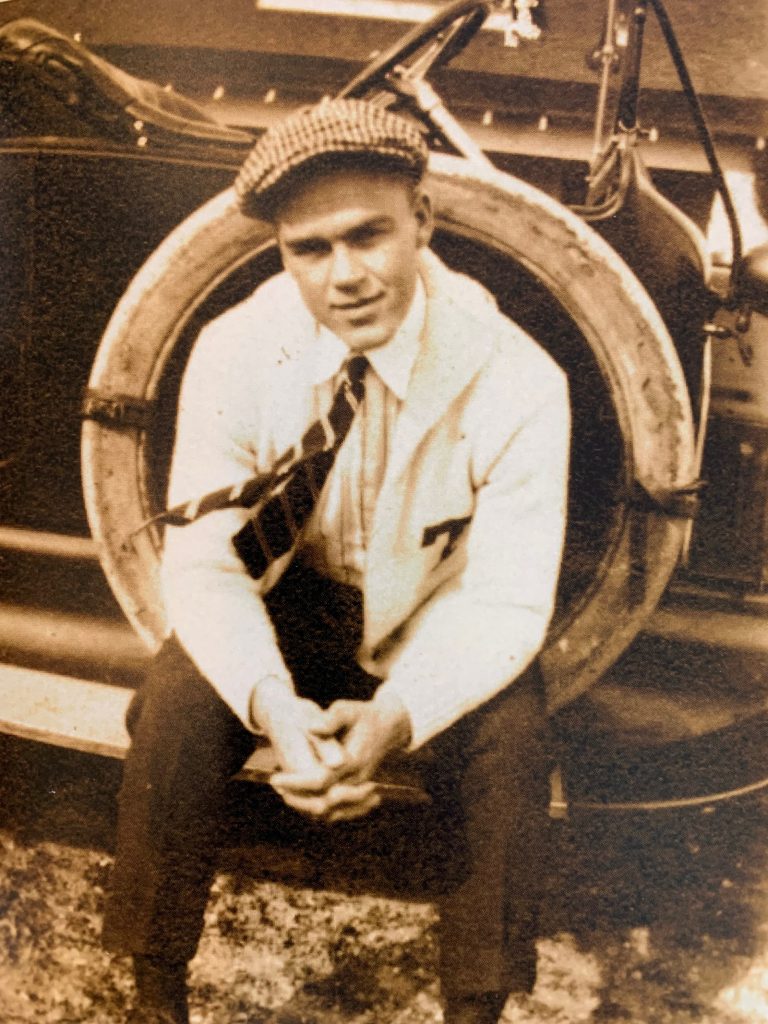
As a result of John and Ceci’s generous loan and visit, we have added more artifacts and expanded the story told by the 1914 Longhorn blanket case. Ray Keck’s letter sweater is now presented beside Lutcher Stark’s honorary letter jacket with an accompanying info panel that features a photo of young Ray in his newly earned letter sweater. Because we permanently house Clyde Littlefield’s collection in our archives, I was curious if his 1914 medal was here at the Stark. I was hopeful because this spring semester, our archivist Caroline Jones had overseen graduate students from the University’s School of Information as they completed a semester long project processing Clyde’s collection. When they moved into more of the objects and artifacts portion of the collection, Caroline had told me there were a significant number of medals. So with help from Caroline, we dove in and found it, Clyde Littlefield’s 1914 football medal. Admittedly, it took slightly longer than expected since Clyde’s medal is missing the “Football Undefeated” banner piece, but we found it and the medal will soon be added to the case, mounted onto the info panel about Ray Keck and his letter sweater, alongside photos of the fully intact medal from John.
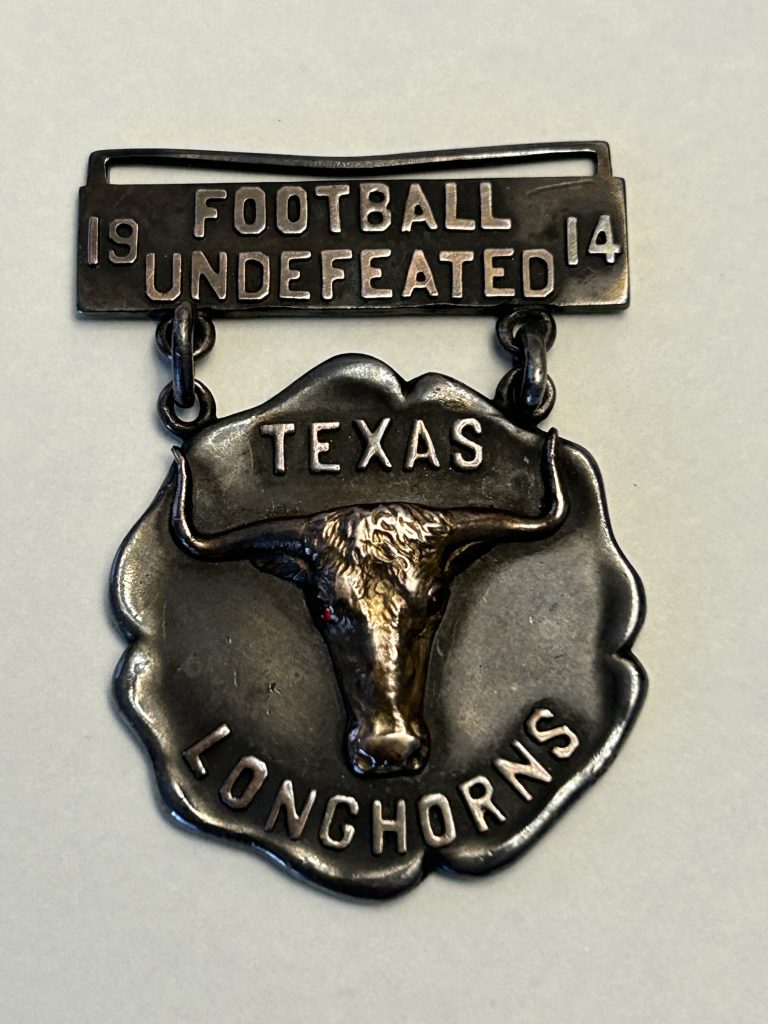
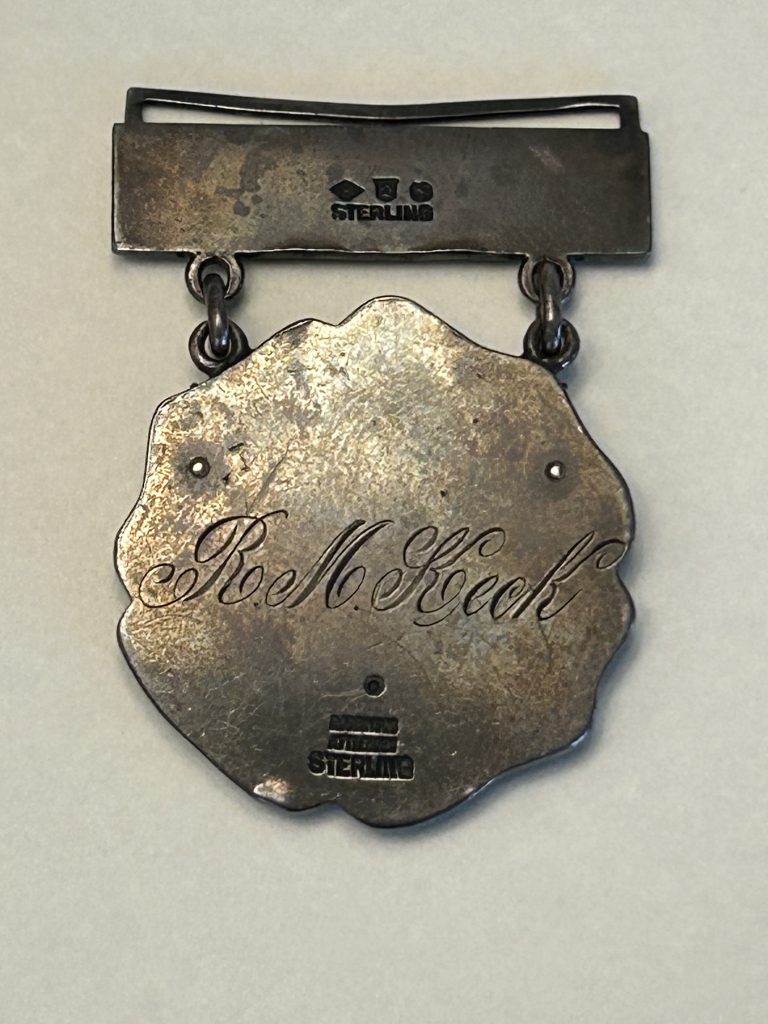
But this isn’t where the story ends! John has been hard at work developing a book about the 1914 Longhorn football team and the young men who made up its legendary roster. He commissioned Charles Kupfer, a professor at Penn State Harrisburg, to co-author the book with him. Kupfer completed his PhD in the American Studies program at the University of Texas in 1998. He is a friend and former classmate of our museum director, Jan Todd, who completed her PhD in the American Studies program in 1995. The book is called “A Team of Champions” and will be published by Texas A&M University Press with an expected release in mid-2026. John has included in the manuscript his grandfather’s collection of photographs, memorabilia, and personal notations. I can already tell you that this book will be a fantastic read. We’ll be sure to help promote its release. So, stay tuned.
Many thanks to John and Ceci Keck who have helped expand our exhibit and deepen our connections to the 1914 Longhorn football team. I’m so glad to count them both as my new friends.
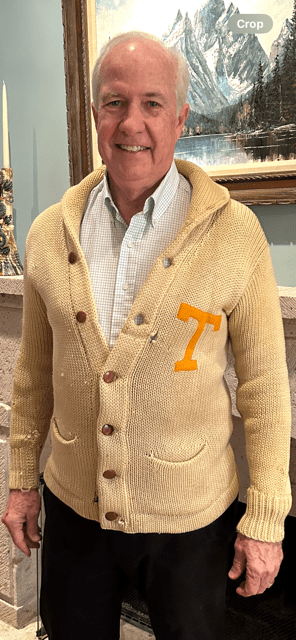



Leave a Reply